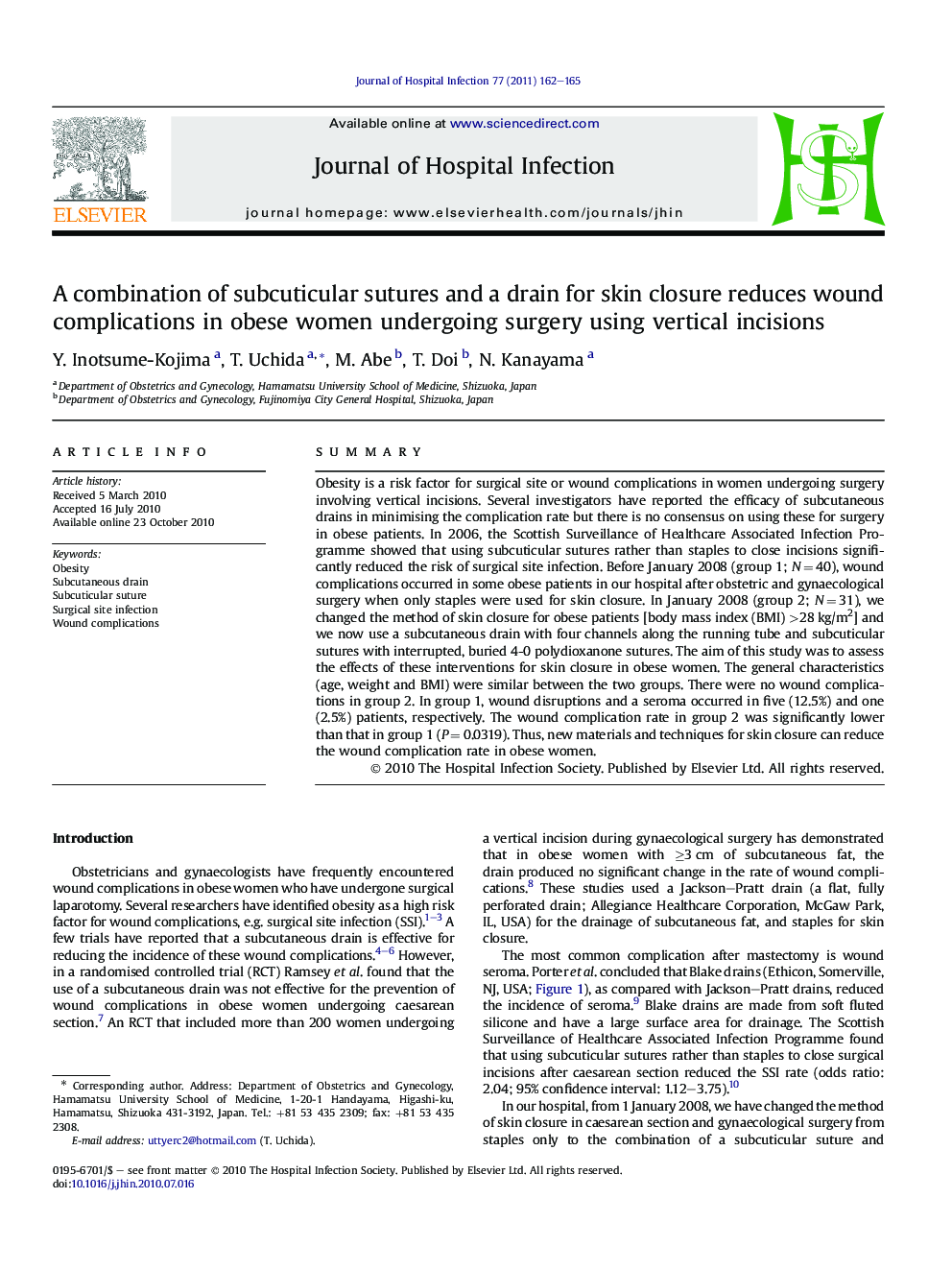| Article ID | Journal | Published Year | Pages | File Type |
|---|---|---|---|---|
| 6122526 | Journal of Hospital Infection | 2011 | 4 Pages |
Abstract
Obesity is a risk factor for surgical site or wound complications in women undergoing surgery involving vertical incisions. Several investigators have reported the efficacy of subcutaneous drains in minimising the complication rate but there is no consensus on using these for surgery in obese patients. In 2006, the Scottish Surveillance of Healthcare Associated Infection Programme showed that using subcuticular sutures rather than staples to close incisions significantly reduced the risk of surgical site infection. Before January 2008 (group 1; NÂ =Â 40), wound complications occurred in some obese patients in our hospital after obstetric and gynaecological surgery when only staples were used for skin closure. In January 2008 (group 2; NÂ =Â 31), we changed the method of skin closure for obese patients [body mass index (BMI) >28Â kg/m2] and we now use a subcutaneous drain with four channels along the running tube and subcuticular sutures with interrupted, buried 4-0 polydioxanone sutures. The aim of this study was to assess the effects of these interventions for skin closure in obese women. The general characteristics (age, weight and BMI) were similar between the two groups. There were no wound complications in group 2. In group 1, wound disruptions and a seroma occurred in five (12.5%) and one (2.5%) patients, respectively. The wound complication rate in group 2 was significantly lower than that in group 1 (PÂ =Â 0.0319). Thus, new materials and techniques for skin closure can reduce the wound complication rate in obese women.
Related Topics
Life Sciences
Immunology and Microbiology
Applied Microbiology and Biotechnology
Authors
Y. Inotsume-Kojima, T. Uchida, M. Abe, T. Doi, N. Kanayama,
